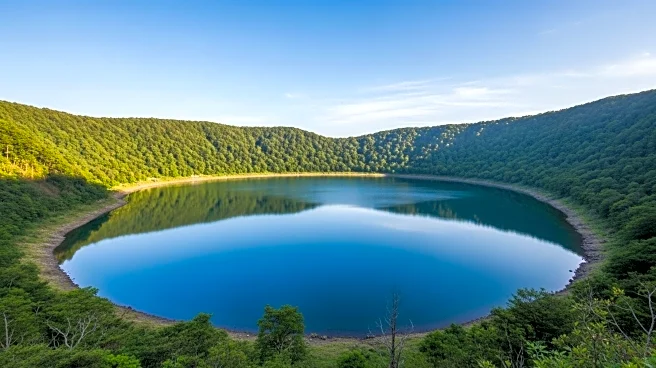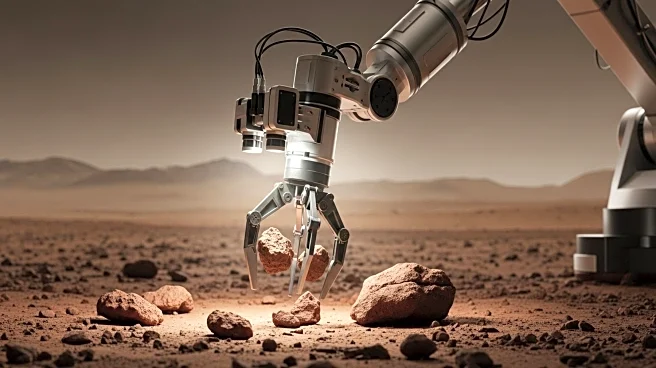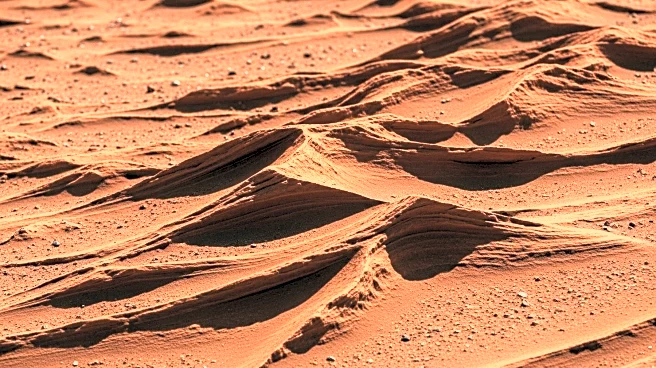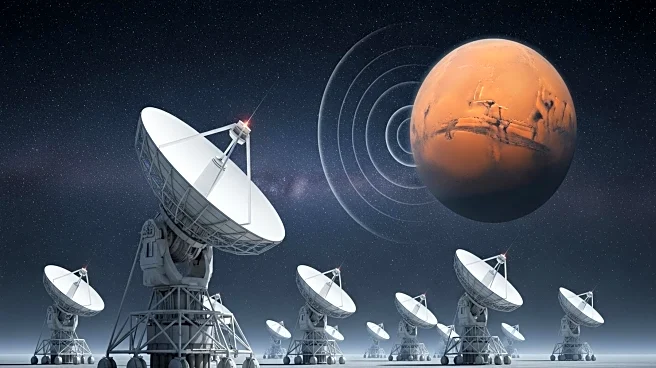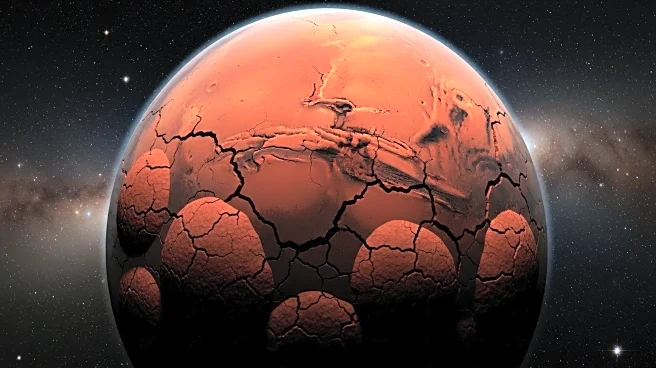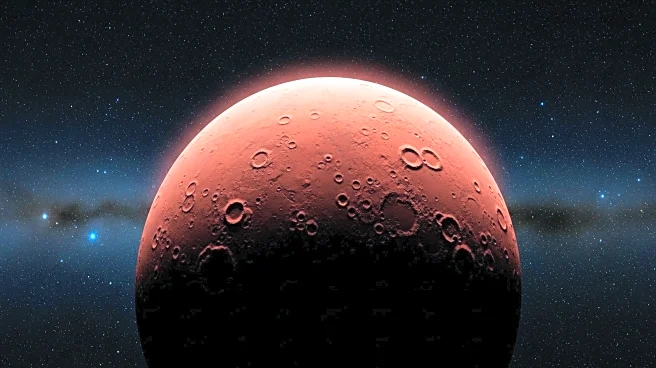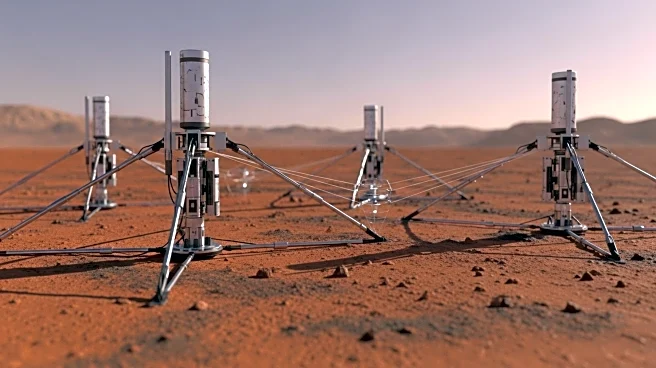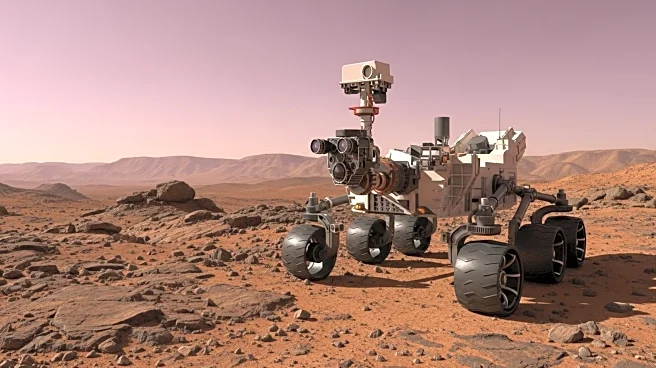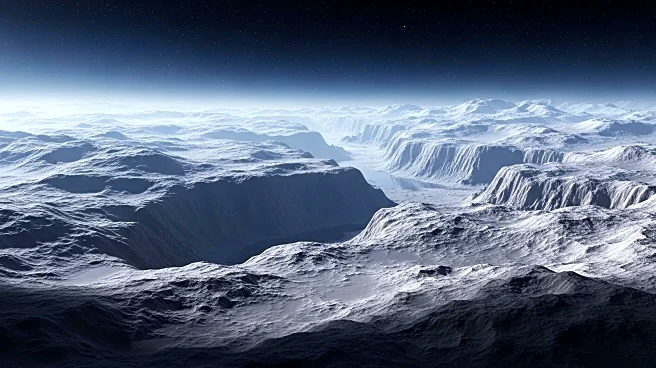What's Happening?
NASA's Earth Observatory has detailed the formation of Lake Bosumtwi in Ghana, a unique geological feature resulting from an asteroid impact over a million years ago. The impact created a well-preserved complex crater, which has become a site of scientific interest due to its rare rampart crater features. These features are typically found on Mars and other icy bodies in the solar system. The impact also fractured the Earth's crust, leading to the concentration of gold and other minerals, which has spurred small-scale mining activities in the region. Satellite imagery has shown significant changes in land use around the lake, including increased mining and agricultural expansion.
Why It's Important?
The study of Lake Bosumtwi provides valuable insights into planetary geology and the effects of asteroid impacts on Earth. Understanding the crater's formation helps scientists interpret similar features on other planets, contributing to our knowledge of the solar system's history. Economically, the region's mineral wealth has implications for local communities, though it also raises concerns about environmental degradation and sustainable resource management. The juxtaposition of ancient geological processes with modern human activities highlights the ongoing interaction between natural history and economic development.
Beyond the Headlines
The expansion of mining and agriculture around Lake Bosumtwi poses environmental challenges, including deforestation and water contamination. Efforts to balance economic benefits with environmental protection are crucial for the region's sustainable development. The cultural significance of the lake to the Asante people adds another layer of complexity, as traditional beliefs intersect with modern economic activities.
